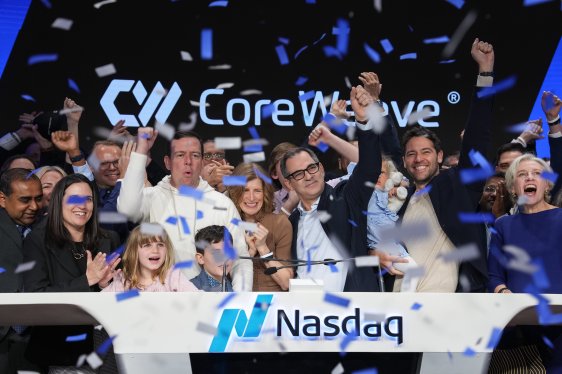How CoreWeave’s GPU Mining Roots Launched a $1.5B AI IPO

CoreWeave recently debuted on the stock market amid a climate of cautious optimism, pricing its IPO at $40—below the originally anticipated $47-$50 range. Despite falling short of expectations, the company succeeded in raising $1.5 billion, achieving a market cap of $14 billion on its first day of trading, marking it as the largest AI-focused IPO to date and the most significant U.S. tech IPO since the peak of 2021.
In a candid interview, Chief Strategy Officer Brian Venturo, clad in a simple white hoodie and speaking with a noticeable Jersey accent, reflected on their unique journey from crypto-mining to becoming a leader in AI infrastructure. Venturo’s path began with his previous role at Hudson Ridge, a hedge fund focused on the energy sector, where he collaborated closely with CoreWeave CEO Michael Intrator and co-founder Brannin McBee. Together, they developed a machine learning model to inform investment decisions in the data-intensive energy market. Following the downturn of the fracking boom, they found themselves pivoting to cryptocurrency.
Initially exploring the intricacies of crypto mining in a casual environment—a pool table in their Manhattan office—Venturo and his team quickly found themselves accumulating GPUs (Graphics Processing Units). What began as a single GPU snowballed into a vast operation, ultimately leading them to a garage in New Jersey. Their operation became notable, as they held the title of the largest Ethereum miner globally for two and a half years, managing a staggering 50,000 GPUs, originally intended for gaming, under challenging conditions with no climate control.
Recognizing the potential to leverage their GPU capabilities for AI, the co-founders sought assistance from EleutherAI, a prominent open-source organization dedicated to advancing AI models. In a strategic exchange, CoreWeave provided GPU access in return for insights on AI training, igniting a transformative partnership that catapulted them into the AI sector. This collaboration opened doors to paying clients, driven by goodwill generated within the startup ecosystem.
As their reputation grew, companies like Stability AI became clients, and they courted significant investments, including a pivotal $100 million from investors at Magnetar who were persuaded by Venturo’s fervent advocacy for the future of AI technology. This strategic growth attracted attention from major players such as OpenAI, which recognized CoreWeave’s potential through their work with the open-source community. This culminated in a substantial partnership with Microsoft, which, although facing competition from CoreWeave’s expanding operations, initially served as one of its largest customers.
Currently, CoreWeave boasts 32 data centers and an impressive inventory of 250,000 GPUs, including rare Nvidia Blackwell chips, which support advanced AI reasoning capabilities. While concerns about the company’s $7.6 billion debt loom—much of which is due for repayment in two years—Venturo remains optimistic. A substantial portion of CoreWeave’s annual $1.9 billion revenue is underpinned by contracts designed to cover the costs incurred for GPU acquisitions.
Reflecting on their unexpected journey from hedge fund analysts to cryptocurrency miners and now key players in AI infrastructure, Venturo emphasizes the serendipity that has defined their path. “There’s so many pieces of luck along the way, it’s crazy,” he remarked, underlining the unpredictable nature of success in the tech industry.
